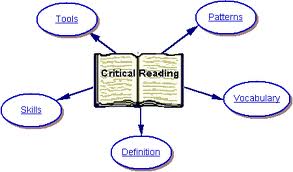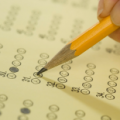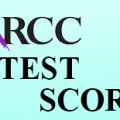- Read What Your Child Reads
- Ask Your Child to Cite Evidence
- Reinforce Reading Strategies
- Let them predict
- Let them find connections
- Ask Questions
- Clarify
- Provide visual demonstration
- Let them evaluate
Return To Teachers Speak
Students are required to read more complex texts and answer questions that need a higher degree of critical reading skills to do well in the Common Core State Standards and corresponding PARCC assessment (which will eventually be in lieu of the New Jersey ASK test). image credits: anak damai sejahtera
Critical reading is a form of language analysis that does not take the given text at face value, but involves a deeper examination of the claims put forth as well as the supporting points and possible counterarguments. The ability to reinterpret and reconstruct for improved clarity and readability is also a component of critical reading. The identification of possible ambiguities and flaws in the author’s reasoning, in addition to the ability to address them comprehensively, are essential to this process. Critical reading, much like academic writing, requires the linkage of evidential points to corresponding arguments.
Info credits: Wikipedia.org
To help your child become more comfortable with the increased rigor in reading, there are some simple critical reading tips or steps that you can take, such as:
image credits: anak damai sejahtera
Critical reading is a form of language analysis that does not take the given text at face value, but involves a deeper examination of the claims put forth as well as the supporting points and possible counterarguments. The ability to reinterpret and reconstruct for improved clarity and readability is also a component of critical reading. The identification of possible ambiguities and flaws in the author’s reasoning, in addition to the ability to address them comprehensively, are essential to this process. Critical reading, much like academic writing, requires the linkage of evidential points to corresponding arguments.
Info credits: Wikipedia.org
To help your child become more comfortable with the increased rigor in reading, there are some simple critical reading tips or steps that you can take, such as:
Read What Your Child Reads
– Simply spend some time getting to know what your child is reading, whether it’s required for class or an independent novel. This will allow you to discuss the content with your child and gauge how well he or she comprehends the text.Ask Your Child to Cite Evidence
– As your child reads a book (for pleasure or for class), ask him or her questions about the reading material. Then, ask your child to support those answers with evidence from the text. For example, if your child absolutely loved a novel, ask questions like: “What happened in the story that made it your favorite? What did the characters do or say that made it so good? What was the most exciting part of the book?” These questions will prompt your son/daughter to demonstrate comprehension by being able to summarize or synthesize the information in the book.Reinforce Reading Strategies
– At Home. Many ELA (English Language Arts & Literacy) teachers work on reading comprehension strategies with students, but the more they practice at home and at school, the better they get at not only understanding the text but also being able to apply what they’ve read to essay questions, comprehension tests, and writing tasks. The following strategies are easy to work on at home and require little to no materials or advance preparation:PARCC Test Practice: Online Resources for Your Children
Let them predict:
Ask your son/daughter to predict what’s going to happen next in the story. Then ask why, as this will reinforce the need to cite evidence from the text to explain the prediction.Let them find connections:
Ask your child to link what s/he has read with another book, movie, news topic, etc. By making these connections, your child is going above and beyond basic comprehension by sifting through similarities and differences and making associations and connections between the two.Ask Questions:
Have your child pose questions about what he or she read, such as, “What does ____ (vocabulary word) mean? Why did the character do that?” As your child continues reading the passage or book, revisit these questions later and try to answer them. Sometimes, the child will need to read until the end of the passage to answer a given question, while other times he or she may need to consult an outside source (dictionary, encyclopedia) to locate the answer to his/her question.Clarify:
As your child revisits questions and predictions, he or she is clarifying information – which is an indicator of how well your son/daughter understood the reading. Another easy way to clarify what has been read is to summarize what happened in each chapter.Provide visual demonstration:
For artistically inclined children and visual learners, asking the child to sketch a scene from a book demonstrates how well the child understood the reading passage, and it also forces your son/daughter to make a “mental movie” during reading (another great way to focus and improve comprehension of reading material!).Let them evaluate:
Kids love to share their opinions, and if you ask your child to make judgments about characters, their actions, plot, etc., you’re helping your son/daughter to evaluate the text. Citing evidence surfaces repeatedly in the Common Core Standards, so you’ll be doing an excellent job of reinforcing skills that your child is learning in the classroom. Likewise, the evolving battery of state tests (PARCC) will require students to revisit the text to demonstrate reading comprehension. With any of these strategies, the more you ask for examples from the text to support a particular opinion, the more prepared your child will be to think critically in the classroom and beyond.Tags:








Pingback: Understanding Readability Levels | Lumos Learning
This is some really good information about reading. My sister is worried about teaching her son how to read. So I liked what you said about reading what he reads. That does seem like it would help. My nephew likes playing games so I wonder if playing some reading games be helpful.